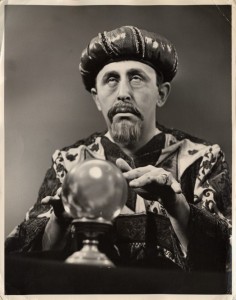Learning from Wikipedia’s History
It’s only noon, yet twice today, I’ve been asked questions about starting up a web business. Both products are very different; one regarding a content play, the other a B2B e-commerce site. Understandably, both were very different questions. But my answer was the same: Read how other websites started, because your assumptions are just wrong.
That’s precisely what I’ve been doing for about two or three years now, but I keep losing the links that I’ve found. So for my purposes, here they are, memorialized. And for any readers, here you go. All I ask is that you leave your thoughts and links as well — basically, consider this a collaborative endeavor. And that goes for ANY web company, not just the one(s) I am posting about.
First off, Wikipedia.
What I Found
In two parts, are the memoirs of Larry Sanger — an early pioneer on the Wikipedia project and its predecessor, Nupedia. They’re at Slashdot, specifically http://features.slashdot.org/article.pl?sid=05/04/18/164213 and http://features.slashdot.org/article.pl?sid=05/04/19/1746205, and are the best early-stage sources of information.
Wikipedia is, itself, a great source of history, even for itself. These articles are key:
- http://en.wikipedia.org/wiki/Nupedia
- http://en.wikipedia.org/wiki/Gnupedia
- http://en.wikipedia.org/wiki/Encyclopedia_libre
- http://en.wikipedia.org/wiki/History_of_Wikipedia, especially http://en.wikipedia.org/wiki/History_of_Wikipedia#Founding_of_Wikipedia and how the project gained steam, excerpted below for posterity’s sake:
The project received many new participants after being mentioned three times on the Slashdot website, with two minor mentions in March 2001. It then received a prominent pointer to a story on the community-edited technologies and culture website Kuro5hin on 25 July. Between these relatively rapid influxes of traffic, there had been a steady stream of traffic from other sources, especially Google, which alone sent hundreds of new visitors to the site every day. Its first major mainstream media coverage was in the New York Times on 20 September 2001.
Finally, there’s the old Nupedia mailing list, archived on Archive.org, from when Wikipedia launched. It’s at http://web.archive.org/web/20030425172430/www.nupedia.com/pipermail/nupedia-l/2001-January/thread.html#679. It’s slow, but worth poking around.
What I Learned
There are a lot of tactical details in the links above which are best thought about and not memorialized lest they become frozen as fact. But here are two big picture strategy points:
- The community came first; the product second. It’s not like Jimmy Wales (and depending on who you ask, Larry Sanger) had some big idea to install a wiki on a web server and then proselytize until it became Wikipedia. The opposite happened: they had the following, and then the figured out the product. And it took years and multiple iterations.
- Timing is everything. Sanger discusses how Google would index the site every few days, and wham, a bunch of traffic would come in. If you went that route today, you’d fail: Google indexes a site and nothing happens, because the space is so crowded. Similarly, a pair of links from Slashdot or Kuro5hin or their present-day equivalents would hardly be a tipping point.
- It is not clear that Wikipedia would have been a success had it been commercial in nature. In other words, sometimes the reason something makes very little or no money is also the reason why it succeeds.
 Marc has a well thought-out
Marc has a well thought-out 
 Just ask
Just ask  The problem with the rule is that it prevents you from writing when there is no obvious audience, or when you do not have a target one in mind. If you cannot tailor your writing, how are you supposed to write? That problem is, primarily, why I have not had my own blog in way too long.
The problem with the rule is that it prevents you from writing when there is no obvious audience, or when you do not have a target one in mind. If you cannot tailor your writing, how are you supposed to write? That problem is, primarily, why I have not had my own blog in way too long. But I’m more interested in one word: “it”. Specifically, “Explain why you need it and you’ll get it.” “It” is not “what you asked for” — but rather “what you you want.” There’s a big difference.
But I’m more interested in one word: “it”. Specifically, “Explain why you need it and you’ll get it.” “It” is not “what you asked for” — but rather “what you you want.” There’s a big difference.